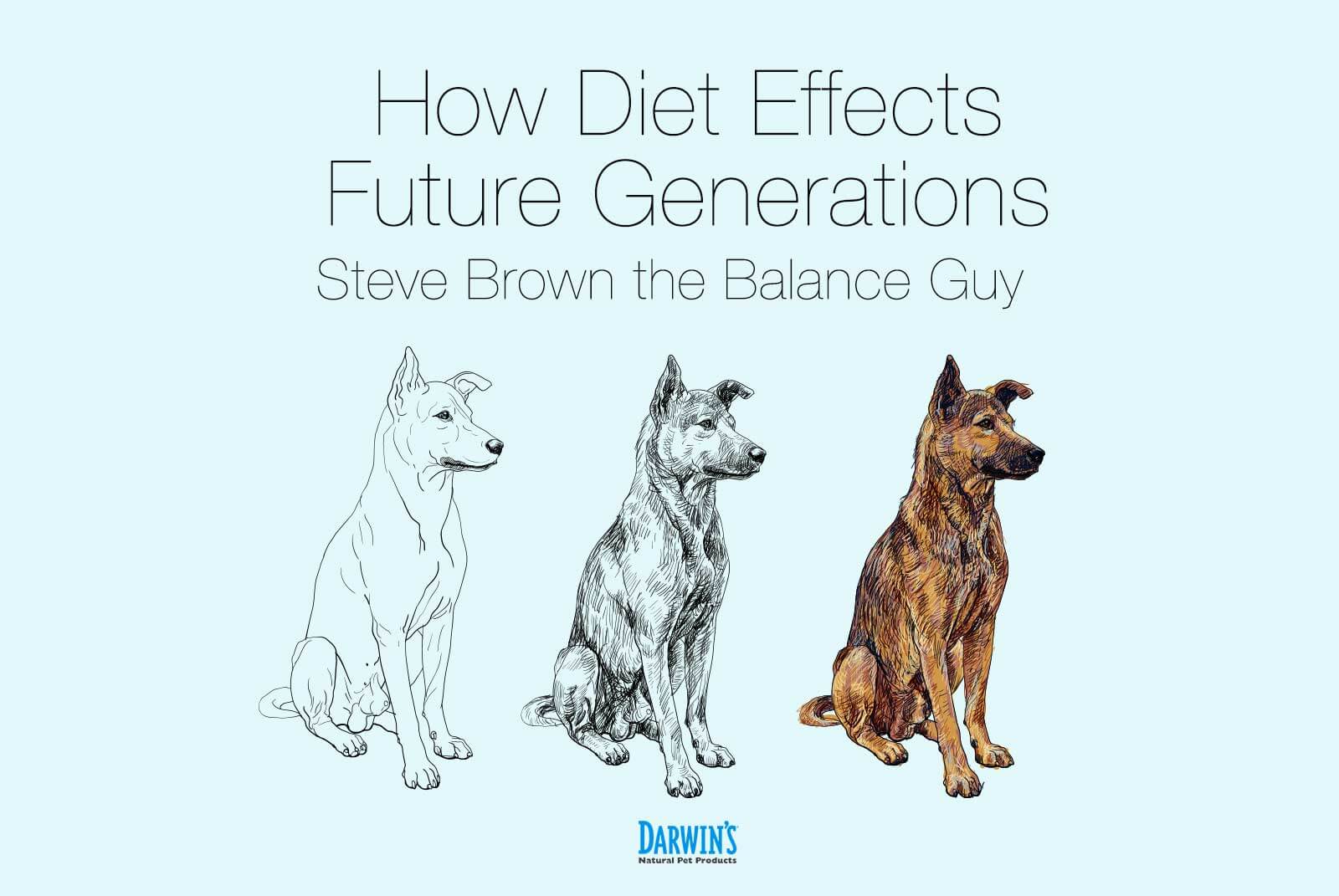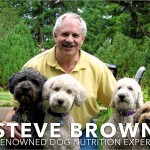Your Pets Health Potential
4/7/16

 Steve Brown is a renowned dog nutrition expert who has been in the raw dog food industry since its start. He’s been called the Godfather of Raw Dog by many, but is most known for his book “Unlocking the Canine Ancestral Diet” and “See Spot Live Longer.”
Steve Brown is a renowned dog nutrition expert who has been in the raw dog food industry since its start. He’s been called the Godfather of Raw Dog by many, but is most known for his book “Unlocking the Canine Ancestral Diet” and “See Spot Live Longer.”
The longer I worked with feeding a well-made raw meat diet to my dogs, the more I saw how much the health effects of this diet for dogs continue across generations.
Well-made, raw meat-based diets will help the vast majority of dogs and cats bring out their full health potential. Yet, while the title of my first book, See Spot Live Longer, is short and catchy, it is not completely accurate. Many “pure-bred” and over-bred, new-breed dogs or cats have or will get genetic diseases. Regardless of what we feed them, they will not live long and healthy lives. Some rescue dogs and cats suffered from stress and malnutrition as fetuses and young puppies or kittens, and no matter what we do may have health problems. Even so good food may minimize these problems.
This article looks at where a dog’s and cat’s health potential comes from. It divides into four parts, or what can be considered time periods, and food plays an important role in all four.
Your dog’s and cat’s genetic inheritance, the genes inherited from mom and pop going back thousands of years.
In the 20th century, many people believed we are what our genes dictate, genes were our destiny. However, we know now that this view is too simplistic. The environment, including the foods consumed, plays an important role in the how the genes work together and therefore the health potential of any animal. If a dog or cat has a genetic predisposition for a disease, a good diet, especially as a fetus, may depend upon the disease, reduce the likelihood of the occurrence. On the other hand, poor diets, especially those lacking any fresh foods, may increase the likelihood of the disease occurring.
A new study into this area concluded: “The classical view is that genes control how nutrients are broken down into important molecules, but we’ve shown that the opposite is true, too: how the nutrients break down affects how our genes behave.” In other words, what we feed our dogs affects the expression of their genes, which proteins the genes produce, and therefore the health of the dog.
Our dog’s genetic inheritance is not necessarily her destiny. Great diets allow the full health potential of the genes to be expressed.
Your dog’s and cat’s “epigenetic” inheritance: what her parents and grandparents ate.
The exciting new science of epigenetics shows the importance of environmental effects throughout the generations. From the perspective of diet epigenetic research has shown that what our dogs’ and cat’s parents, their parents and their parents ate affect the expression of our dogs’ and cat’s genes and their health potential today.
Epigenetics shows why generation after generation of poorly fed dogs and cats, who were fed according to common veterinary wisdom “never change your dog’s or cat’s food, and never feed table scraps or real foods,” (a message dominated by the huge pet food companies and their billion dollars in ads and “research money”) end up with ever-growing amount of health problems, requiring increasingly costly amounts of veterinary care.
Fortunately, the deleterious effects of poor diets are reversible, but not always in one generation. Dr. Francis Pottenger, in his famous decade-long study, Pottenger’s Cats, showed this, and many dog breeders, who have been feeding well-made raw diets for many generations, are finding that each generation, on average, gets healthier, lives longer and has greater health potential. The effects of great diets are passed on generation after generation, showing that there is a Lamarckian aspect to inheritance.
Pre-conception through weaning:
What the father and mother ate or didn’t eat for several months before mating through weaning? This is essential reading if you’re planning on getting a puppy or kitten. Probably the most important time for great nutrition is a few months before conception for both the mom and the dad (the nutritional status of the dad is passed on through his sperm) through weaning.
For most dogs, for example, a great diet for pre-conception through weaning is:
• high in protein, with balanced fats,
• meets the most demanding scientific nutrient standards for growth primarily with fresh whole foods, and
• is especially rich in natural sources of zinc, choline, and the essential omega-3 fats, EPA and DHA.
This is also a crucial time for the pups to be able to go outside and eat dirt and other microbe-rich foods to develop healthy gut microbiomes. The natural diet of puppies included lots of microbe-rich foods.
Sterile diets, such as dry and canned foods, and sterile environments, often found in puppy mills, can hinder the development of the pup’s gut microbiome, thereby reducing the pup’s health potential.
If you’re getting a puppy or kitten, talk to the breeder and, if possible, try to make sure both parents were fed well prior to conception, even if you need to pay more for the puppy or kitten (you’ll probably save more in vet bills in the long run). From pregnancy to weaning, make sure the breeder is feeding a well-made raw diet at least twice a week.
The importance of great foods during the preconception through weaning time period shows why one shouldn’t get a dog from a puppy mill. Moms are kept in cages most of their lives, lacking the important social network, probably getting the least expensive food with no DHA and no real foods. This poor nutrition and stress are passed through to the puppies, reducing their health potential.
What you can do, with good food, to maximize your pets health potential?
Which is the focus of the rest of this blog series.
Check out Steve’s Intro to this series!
– Steve Brown’s Introduction to Focus On Nutrients Part 1
[1] University of Cambridge. “Could the food we eat affect our genes? Study in yeast suggests this may be the case.” Science Daily. Science Daily, 11 February 2016. <www.sciencedaily.com/releases/2016/02/160211111503.htm>.

Steve Brown is a dog food formulator, researcher, and author on canine nutrition. In the 1990s he developed one of the leading low-calorie training treats, Charlee Bear® Dog Treats, as well as the first AAFCO-compliant raw dog food. Since 2003 he has focused on research and education. He is the author of two books on canine nutrition (See Spot Live Longer, now in its 8th printing, and Unlocking the Canine Ancestral Diet (Dogwise Publishing, 2010); and a 40-page booklet, See Spot Live Longer the ABC Way.



